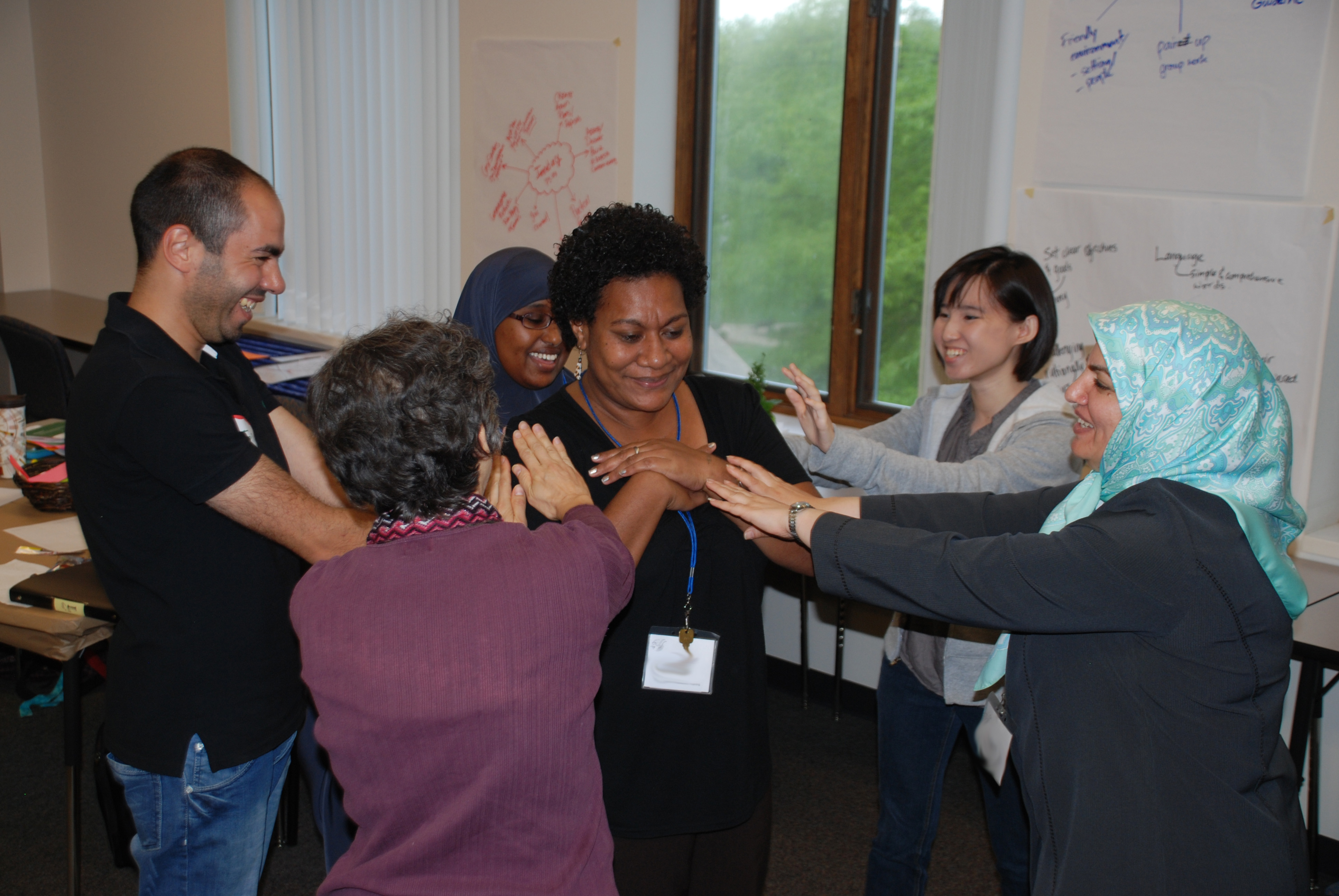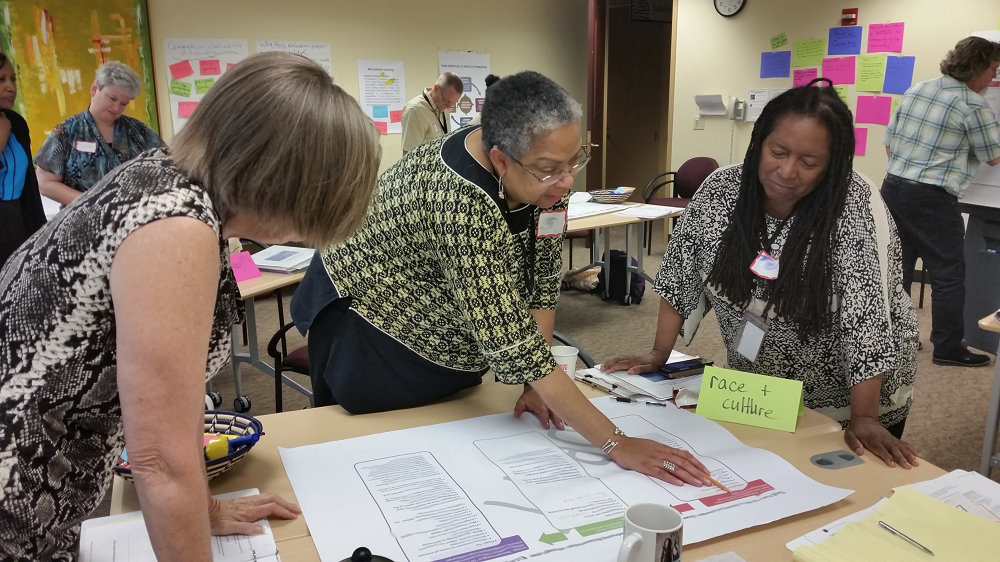Dec 28, 2015
In Canada we are fortunate to live with diverse cultural groups. However, at times, the way we communicate or approach interpersonal communication in one’s culture, can influence the way we engage and participate in a learning event when diversity is present.

The following are six fundamental patterns of cultural difference as named by DuPraw and Axner in their article Working On Common Cross-Cultural Communication Challenges*:
- different communications styles
- different attitudes toward conflict
- different approaches to completing tasks
- different decision-making styles
- different attitudes toward disclosure
- different approaches to knowing
Here are some tips for honouring and inviting this diversity:
- Learn about the people coming in advance. Taking time to discover who is coming to the event will better allow you to design relevant and meaningful learning tasks, use examples that are helpful, and check your assumptions. The more you know about your group/audience (as individuals and as a group) the better you will be able to enliven the event with intentional facilitation that personalizes the learning for each individual.For example, ask learners: What are you most excited about learning? What concerns or need do you have?
- Ensure safety and respect. It is always critical at the beginning of the learning event and even in advance of the event to determine what safety needs should be considered. People with different cultures have different levels of comfort with disclosure or attitudes about conflict. Prior to the start of the learning event, take the time to individually meet and greet your learners. This can be done for online as well as face-to-face events. Taking time to make that connection, will help put the learner at ease, and feel a sense of safety and respect. Also, determine and set group guidelines right away. By doing so, you help set the stage for meaningful engagement and sharing. Also remember, everyone likes affirmation. Affirm your learners’ contributions. It takes courage to share and be a co-creator in the learning event. For example, ask yourself: What do the learners need to feel a sense of safety?
- Offer choice. Adult learners will choose wisely according to their needs and comfort level. For this reason, when you offer choice about how to do an activity (drawing or writing) or receive information (follow along in the brochure or with the drawings), adults will engage in a way that is most helpful for them. Be sure to create safety (“it’s okay to do it different”) and reminder them of the options for a task. For example, ask learners: On your own or with a partner, write a new definition using that samples given to you.
- Be flexible. As facilitators of learning, it is so important to be able to read your audience and adjust the flow of the learning event based on their needs. If you sense that your learners need more time to wrestle with the content so that they can understand and engage with it, add a pause or extra time, or ask a colleague to work separately with some of the group. If needed, switch it up if you know that a large group learning task might not work and change it to a personal reflection. Going with the flow and adjusting your design is critical when working with a diverse group of learners because at the end of the day, we want all learners to walk away feeling a sense of accomplishment and success. For example, ask yourself: What needs to change in the learning design (right now) because of what I am seeing/feeling in the room with this group?
- Be clear and simple. You may think that this goes without saying, but all too often professionals get caught up in jargon or the complexities of their field. Use plain language when teaching and designing your handouts. Use a combination of words and visuals (pictures, videos, etc.) where possible to share new content. Teach as if you are having a casual conversation – keep it down to earth. This is not about impressing people in the room, this is about learning. For example, ask yourself: What jargon do you often use that needs to be avoided with this group? How will you ensure this happens for all?
- Personalize. When learners are invited to apply new content they should use their own examples, stories, challenges and situations as much as possible. By personalizing, you are honouring and inviting the diversity in the room and by sharing these applications, you are also celebrating them. This is easy and essential for learners and their learning.For example, ask learners: On your own, think of your own situation at work. How would it look at the office if you tried this model out with your colleagues? What do you think would be helpful about using it and what would be especially challenging?
- Offer accessible materials. When designing learning tasks or the materials that accompany your learning event, we need to be mindful of the needs of our diverse learners. As discussed in Tip #5, make sure the content you are sharing is in plain language. Use a variety of ways to connect your learners to the content (i.e. pictures, diagrams, videos, role play, etc.). If possible, share some of the content before your learning event, so the learners can review the materials in advance and engage with it in a way that helps them understand the content. Create more opportunities for personal reflection or use paired or small group work, especially when you know disclosure is something that the learners are not comfortable doing in a large group. Also, plan how you will structure the environment of your learning event. If the learning event is face-to-face, give some thought about location, time of day, and room set-up (e.g. arranging the chairs in a circle or small groupings of chairs/tables).For example, ask yourself: How can I use the place, space, time, and timing to enhance learning for these individuals knowing the diversity they bring?
- Be transparent. Different cultures may have different expectations about what happens or doesn’t happen in a learning event. To minimize resistance and confusion, be transparent about why you are doing something in a certain way or time. If safety and respect have been present, and learners understand why you are doing something, they will most likely be more able to give something a try even if it is different from what they are used to. For example, ask learners: What we are going to do next may feel different from what you are used to. In a few minutes I will ask you to… We are doing this so that… This afternoon, we work with the same material in a different way…
- Reflect back. From time to time it is important to tell a group what you are observing in the room. Highlighting an energy shift after a tough task or a blockage when a question is asked or difference in how individuals are able to engage with a topic, can help a group and learning. It may also be an opportunity to change a task to better suit a group or some learners.For example, ask learners: I have noticed that when I invite pair work many of you prefer to work on your own. This is good to know. So, for this next task let’s work on our own…”
- Show genuine curiousity. Having the opportunity to have diverse groups of people at a learning event can invite and cultivate genuine curiousity. Having diverse perspectives, insights and understandings invites the opportunity to co-create a higher level of learning or shared understanding, as well as, excitement and engagement. It can help open the door from a fixed mindset to a growth mindset – one in which we can see a greater number of possibilities. More importantly, having diverse groups of people at the learning event especially around a topic area that is deeply meaningful to the learners, can help build not only that genuine sense of curiousity but a genuine sense of human connectedness; connectedness that makes learning more relevant and powerful. For example, ask yourself: How can I best prepare myself to facilitate this event authentically so I am fully present and authentic with this group?
*DuPraw, M.E. and Axner, M. (1997). Working On Common Cross-Cultural Communication Challenges. NCSALL Study Circle Guide, Topsfield Foundation.

*****
Jeanette Romkema jeanette@globallearningpartners.com is a Senior Consultant and Partner with Global Learning Partners. She has lived and worked cross-culturally for 30 years and deeply values diversity in groups and communities.
Jessica Luh Kim Jessica.LuhKim@schlegelvillages.com is the Director of Education and Program Development at Schlegel Villages. Jessica has a passion for understanding cross-cultural differences in order to better serve and support the communities she works with.



